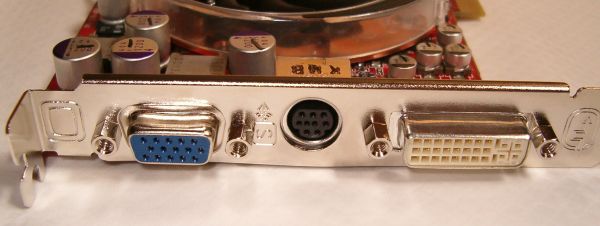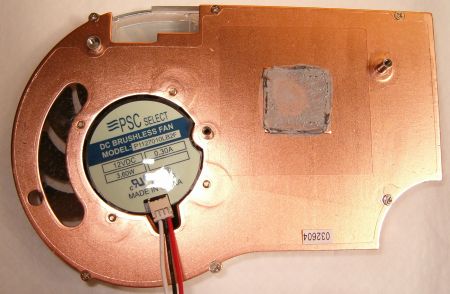Reference Board Examination


The PCB has reference 9800XT board proportions, with slightly less used PCB space than the outgoing board. The use of GDDR3 memory is the reason for the lack of discrete cooling for the modules, reducing the size of the cooler needed for the board, along with needed board space, since the DRAMs are small.
It needs a single molex power connector, like the outgoing 9800XT and other 9800 models, unlike NV40. GPU power requirements, while outside of my remit in terms of being able to measure it explicitly, are less than 70W under heavy load, according to ATI. Their documentation alludes to a slightly smaller peak power draw than 9800XT, a testament to the design and TSMC's 130nm low-k process.
The yellow connector is most likely for audio output from the Rage Theater video and audio processor.
The DRAM devices are Samsung's K4J55323QF-GC16 GDDR3 parts. Rated to 600MHz, they have some headroom on the X800 XT reference board, being clocked at 560MHz.
The regular analogue VGA, S-Video I/O and DVI-I ports make an appearance on the reference design. ATI's AIB partners are actively encouraged to use dual-DVI if their target market demands it, the GPU more than capable of powering such a configuration. It doesn't make an appearance on the reference design, but it should show up on more than a few AIB partner boards.
The rear of the card is sparse. The four DRAMs on the back side of the board don't need active cooling and the only other notable features on the rear of the board are the Rage Theater processor and a small PAL/NTSC toggle DIP bank.

The cooler is all copper, cooled by a brushless DC fan with speed adjustment. It's responsible for a maximum 3.6W power draw at the maximum 12V. It's single slot (155KB .jpg) cooler, but putting a PCI card in the nearest PCI slot is undesirable for heat and IRQ sharing reasons. It's possible though and certainly more usable than the NV40 reference design, in that you could usefully use the PCI slot backplane for an add-in backplane mounting plate from your motherboard, or something of that ilk. Reference NV40 has no such real luxury.

A voyeuristic shot of the die to round things off. The L318 inscription is mirrored on the sample label that marked the review sample as non-qualification. The die is huge, NV40-like in dimensions and protected from cooler application damage by a raised shim around the GPU package. If I'm reading it right, it was manufactured by TMSC in week 13 of 2004, at the start of April.
The thermal interface material is generously applied and non-conductive, and the core before cleaning was completely covered by the TIM.
As far as weight goes, the reference board weighed a Kate Moss waif-like 338g. In comparison, the NV40 reference board is 396g, ASUS's 9800XT is 458g, and it even weighs less than NVIDIA's NV36 GDDR3 reference board which tips the scales at an even 350g.









